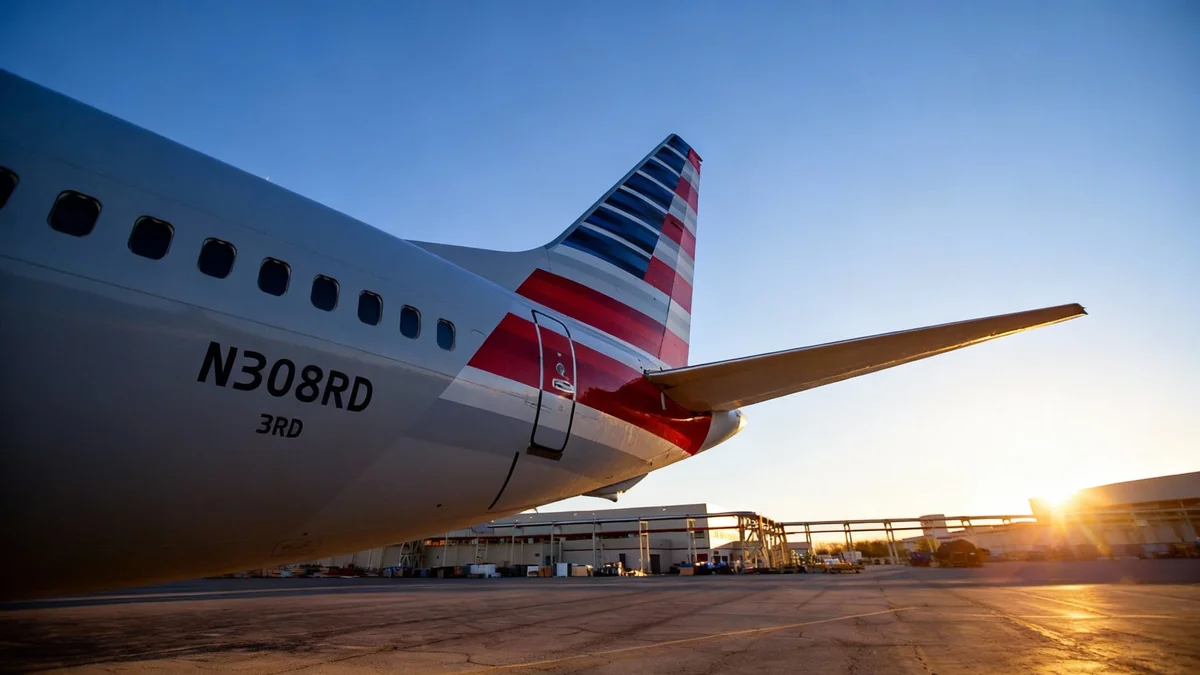Delta Air Lines has reported the highest operating revenue among the three largest US carriers, surpassing United Airlines and American Airlines. The airline recorded $61.6 billion in operating revenue for the full year 2024. This figure positions Delta as a leader in the competitive aviation industry, driven by its focus on premium cabins and strong loyalty partnerships.
Key Takeaways
- Delta Air Lines generated $61.6 billion in operating revenue for the full year 2024, leading its US competitors.
- United Airlines followed with $57.1 billion, and American Airlines reported $54.2 billion.
- Delta's revenue strength comes from premium cabin sales and its partnership with American Express.
- United benefits from its extensive international network and capacity recovery.
- American Airlines relies heavily on its large domestic network and loyalty program growth.
US Airlines: A Revenue Overview
Delta Air Lines, United Airlines, and American Airlines are the three largest carriers in the United States. They operate vast global networks. These airlines serve a diverse customer base, including a significant number of business travelers. Their revenue streams are complex, drawing from various sources beyond just ticket sales.
Loyalty programs, additional fees for services, and strategic partnerships are crucial for revenue growth. These major carriers are at the forefront of these strategies. While all three compete closely, one airline consistently achieves higher revenue figures.
Revenue Figures (Full Year 2024)
- Delta Air Lines: $61.6 billion
- United Airlines: $57.1 billion
- American Airlines: $54.2 billion
For decades, these airlines have competed intensely. They are the remaining major full-service carriers after a period of industry consolidation. Economic challenges and significant global events, such as the decline in air travel after September 11, 2001, led many airlines to fail. However, Delta, United, and American have continued to operate and grow.
Delta's Leading Revenue Strategy
Delta Air Lines has consistently been the top revenue earner among the US legacy carriers. Its reported $61.6 billion in operating revenue for the full year 2024 places it significantly ahead of its competitors. This strong performance is due to several key factors that differentiate its revenue mix.
One primary reason for Delta's success is its focus on high-yield premium cabins. More passengers are choosing premium options, which contributes to higher revenue per flight. The airline also benefits from non-ticket revenue streams, particularly its partnership with American Express.
"Delta's revenue generation mix skews heavily towards high-yield premium cabins and non-lucrative ticket streams, such as the airline's partnership with American Express," industry analysts note.
Key Elements of Delta's Revenue
- Passenger Revenue: Approximately $13.9 billion, primarily from ticket sales.
- Premium Mix: Consistent growth in customer preference for premium seating.
- Loyalty Program: Increased redemption of SkyMiles for award travel.
- Travel-Related Services: Revenue from checked bags and other ancillary fees.
Delta's geographic presence also plays a role. While it has a strong domestic footprint, about $9.3 billion annually comes from its extensive transatlantic and transpacific long-haul routes. Its presence in other international markets, such as South America, has remained stable.
Understanding Operating Revenue
Operating revenue is a key financial metric for airlines. It includes money earned from passenger tickets, cargo, loyalty programs, and ancillary services. It represents the total income generated from the airline's core business operations before deducting operating expenses.
Non-ticket revenue streams are also vital. Delta earns nearly $1 billion from loyalty partnerships and brand economics. While capacity has increased seasonally, recent weakness in main cabin bookings has offset some strong premium growth. This has impacted margins, particularly for economy class travel.
United Airlines: International Network Strength
United Airlines holds the second position in revenue generation among the Big Three. For the full year 2024, United reported $57.1 billion in operating revenue. Its revenue picture is broad-based, with a strong international focus.
In the second quarter, United's operating revenues increased by about 1.7% to $15.24 billion. Passenger revenue grew by 1.1%, supported by a 6% increase in capacity and over 4% more passenger traffic. However, yields were softer, down 3.2% year-over-year, and passenger revenue per available seat mile decreased by 4.5%.
United's Geographic Revenue (Annual Estimate)
- Domestic: Approximately $8.78 billion
- Transatlantic Markets: $3.37 billion (Q2)
- Transpacific Markets: $1.72 billion (Q2)
- Latin American Markets: $1.36 billion (Q2)
United's loyalty program, MileagePlus, remains a core revenue driver. Revenue from non-airline partners in this program climbed nearly 9% to $970 million. The airline recognized about $0.8 billion in revenue from partnership agreements in the second quarter alone. Deferred revenue from frequent-flyer programs exceeded $7.6 billion, showing continued growth.
Strong forward demand is also evident, with advanced ticket sales totaling approximately $9.6 billion. United's extensive long-haul network, especially across the Atlantic and Pacific, is a significant advantage. The airline's Polaris business class is a key revenue generator in these markets.
American Airlines: Domestic Focus and Loyalty Growth
American Airlines ranks third among the major US carriers in revenue, reporting $54.2 billion in operating revenue for the full year 2024. Despite a challenging economic environment, American's second-quarter operating revenue increased by approximately 0.4% year-on-year.
While passenger revenue saw a slight decrease year-on-year, other areas showed growth. Cargo revenues increased by over 8%, and loyalty-related revenues jumped by about 13%. This indicates a shift in revenue contribution for the airline.
American's Second Quarter Revenue Shifts
- Operating Revenue: Up 0.4% year-on-year
- Passenger Revenue: Slightly down year-on-year
- Cargo Revenues: Up over 8%
- Loyalty-Related Revenues: Up around 13%
Geographically, American's revenue growth is primarily driven by domestic markets, accounting for $9.16 billion. Atlantic revenues were around $2 billion, and Latin American revenues were approximately $1.55 billion. This highlights American's strong position in the Latin American market.
Forward demand remains an important part of American's revenue picture. The airline currently holds about $8 billion in liability for tickets already sold for future travel. American Airlines also benefits from strong co-branded credit card economics, which help offset softer pricing in the main cabin.
Key Differences Among the Carriers
Each of the three major US airlines has distinct strategies that contribute to its revenue profile. These differences highlight their competitive advantages and areas of focus.
Delta Air Lines: Premium and Partnerships
Delta leads the market with its strong premium cabin mix and diversified non-ticket revenue. Its partnership with American Express for co-branded cards is particularly impactful. The airline also has a robust and growing third-party MRO (Maintenance, Repair, and Overhaul) presence, which contributes to its high profit margins.
United Airlines: International Reach
United Airlines emphasizes international operations. Its extensive long-haul network across the Atlantic and Pacific is a primary strength. The Polaris business class product is a significant revenue driver. United also focuses on dense hub connectivity and generates substantial revenue from selling miles to MileagePlus partners.
American Airlines: Domestic Scale
American's growth is largely centered on its vast domestic network. The airline operates a large fleet of narrowbody aircraft, which are key to its domestic revenue generation. American has fewer business-oriented hubs compared to its rivals, prioritizing high traffic flow and scale within the US market.
Ultimately, these airlines dominate the market due to their network scale and ability to attract premium travelers. Business travelers, in particular, demand comfortable travel environments, often requiring lie-flat seating options. All three carriers continue to enhance their premium product offerings to meet these customer expectations.
While Delta currently holds the lead in revenue, United is actively working to narrow the gap in both revenue and profit margins. American Airlines aims to maintain its financial stability and leverage its existing assets. The future challenge for all operators will be less about generating revenue and more about efficiently managing costs to maximize profit from the revenue they earn.
Airlines have limited control over overall demand. However, they can significantly influence their cost structures. Carriers that find the most effective ways to manage their expenses are likely to be the most successful in the long term.





